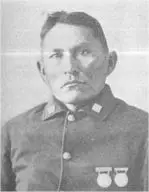Chiricahua Indians, Chiricahua Apache Indians (Apache: `great mountain’). An important division of the Apache Indians, so called from their former mountain home in southeast Arizona. Their own name is Aiaha. The Chiricahua were the most warlike of the Arizona Indians, their raids extending into New Mexico, south Arizona, and north Sonora, among their most noted leaders being Cochise, Victorio, Loco, Chato, Nahche, Bonito and Geronimo. Physically they do not differ materially from the other Apache. The men are well built, muscular, with well-developed chests, sound and regular teeth, and abundant hair. The women are even more vigorous and strongly built, with … Read more

